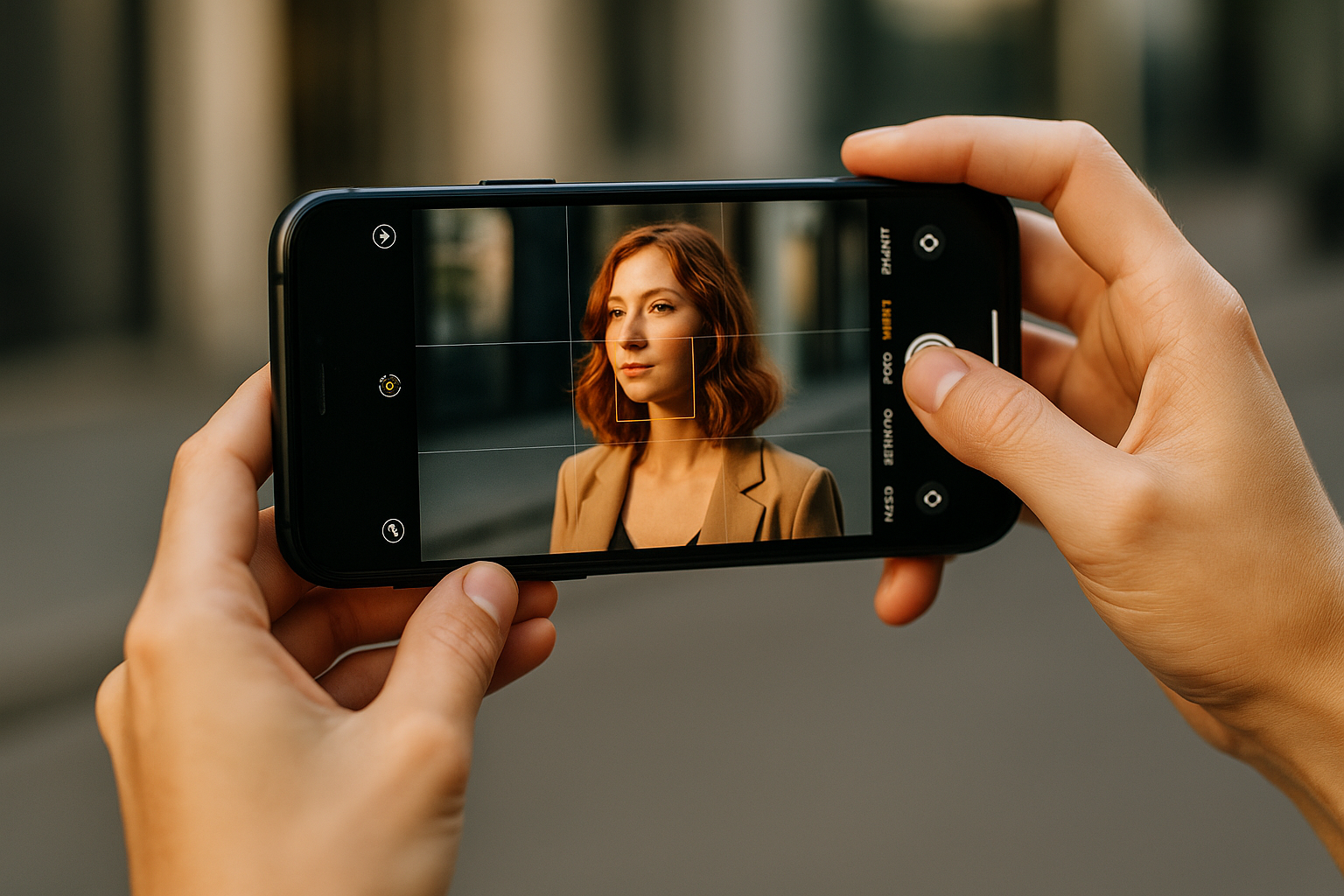You don’t need a DSLR camera to take professional-looking photos. Today’s smartphones come equipped with high-quality lenses and sensors, plus powerful software features that, when used properly, can drastically improve your photo quality.
In this article, you’ll discover practical and accessible tips to take professional-quality photos using only your smartphone, regardless of the brand or model.
1. Clean the lens before taking photos
It may seem obvious, but many people overlook this detail. Phone lenses easily collect grease, dust, and dirt, which can compromise image sharpness. Before any photo session, use a clean microfiber cloth to gently wipe the lens.
2. Use natural light to your advantage
Lighting is one of the most important elements in photography. Whenever possible, make use of natural light:
- Shoot near windows or outdoors
- Avoid harsh midday sunlight, which causes strong shadows
- Prefer the “golden hour” (shortly after sunrise and before sunset) for soft, warm light
If you’re indoors, try using lamps or light sources with soft white lighting.
3. Turn on the gridlines for composition
Almost all phones have a “grid” option in the camera settings. It helps with composition using the rule of thirds, which divides the frame into 9 parts. Place your subject on the intersections of the grid for a more balanced and visually pleasing photo.
4. Manually set focus
Tap the screen to focus on the desired subject. This ensures sharpness exactly where it matters. Many phones also allow manual exposure adjustment by sliding your finger up or down after tapping to focus.
5. Avoid digital zoom
Digital zoom degrades image quality by simply enlarging the pixels. If you need a closer shot, physically move closer to the subject or take the photo from afar and crop it later if needed.
6. Keep the camera steady
Blurry images look amateurish. To prevent this:
- Use both hands to hold your phone
- Rest your elbows against your body or on a stable surface
- Use a tripod designed for smartphones if possible
- Use the timer function to avoid shaking when pressing the shutter
7. Use portrait mode wisely
Portrait mode creates a blurred background effect, mimicking professional lenses. To use it effectively:
- Make sure the lighting is good
- Avoid busy or messy backgrounds
- Properly position your subject
This feature enhances portraits and makes subjects stand out with depth.
8. Explore different angles
Most people shoot at eye level, but that’s not always the most interesting. Try different angles:
- Shoot from above for flat lays (great for food, objects, etc.)
- Shoot from below to emphasize buildings or people
- Try creative or asymmetrical framing
Varying angles adds personality and uniqueness to your photos.
9. Use manual or Pro modes
If your phone offers a “Pro” or “Manual” mode, explore the settings:
- ISO: controls light sensitivity
- Shutter speed: controls exposure time
- White balance: adjusts color tone
- Manual focus: ideal for precise control
These settings take practice, but give you creative freedom and professional results.
10. Edit your photos with good apps
Even the best photo can look even better with light editing. Use apps like:
- Snapseed: lighting, color, sharpness adjustments, filters
- Lightroom: advanced, professional-grade editing
- VSCO: soft, artistic filters
- Canva: to add text, graphics, or create collages
⚠️ Tip: Don’t overdo it. Editing should enhance the image, not distort it.
Bonus: Useful accessories
In addition to your phone, some simple accessories can make a big difference:
- Tripod: for stability and long exposure shots
- Ring light: great for portraits and videos
- External smartphone lenses: add effects like fisheye, macro, or wide-angle
These accessories are affordable and significantly boost your photography potential.
Become a better photographer with what you already have
The truth is: the best camera is the one you know how to use. Mastering your phone’s camera and learning to observe light, composition, and framing makes more difference than investing in expensive gear.
With practice, attention to detail, and a bit of creativity, your phone photos can reach a professional level — and impress anyone on social media or in your portfolio.











